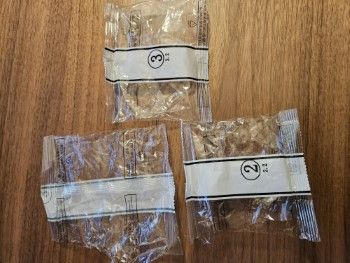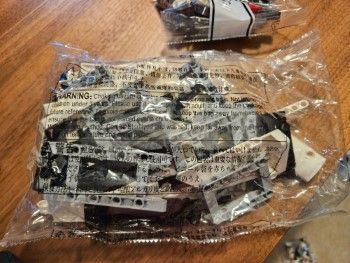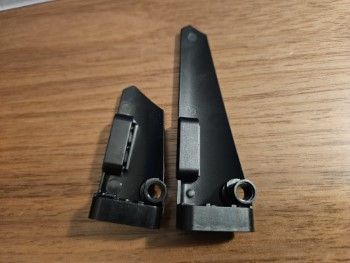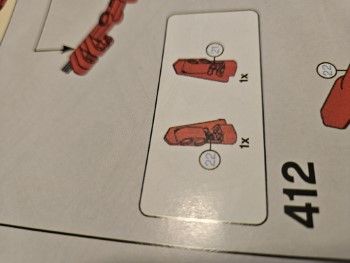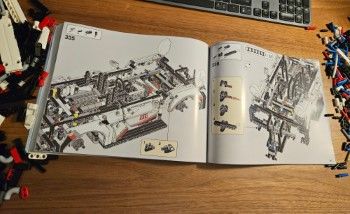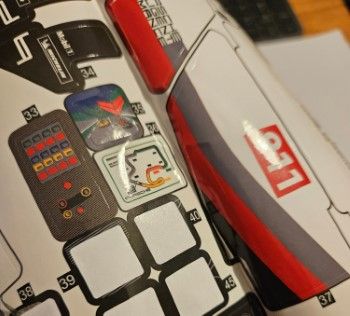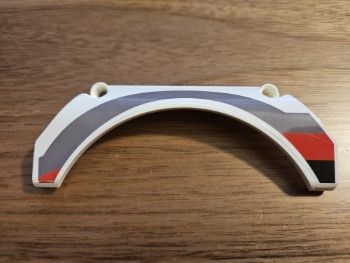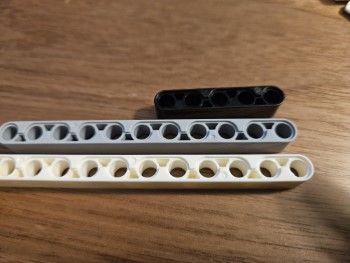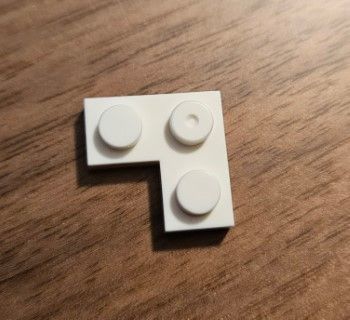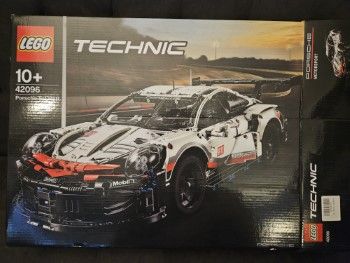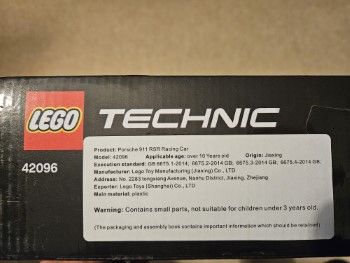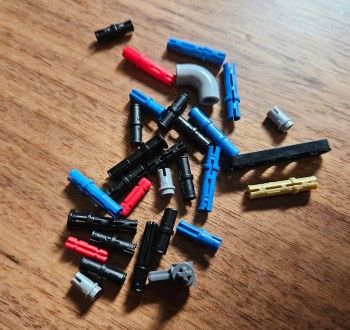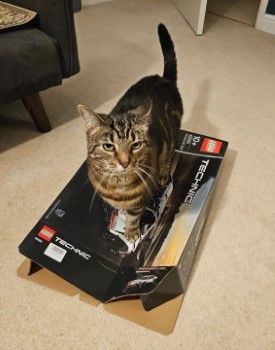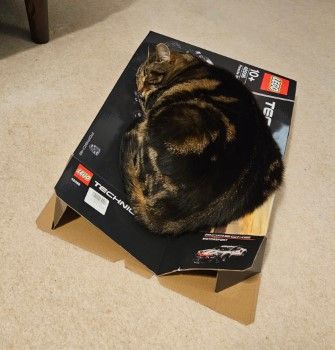
I got scammed with a very high quality fake LEGO Porsche 911 RSR! Here's all the red flags I missed, and why I'm keeping the set
I recently received a LEGO Porsche 911 RSR as a gift, and during the build process a few odd things happened. Pieces didn’t look quite right, the packaging wasn’t what I was used to… it’s a fake! However, it’s such a high quality fake that I didn’t realise until 1/3 of the way through, and I decided to keep it. Here’s a few things to check to avoid being scammed.
Backstory
So, I’ve built multiple large, expensive LEGO sets in the past. I even built the 3.7k pieces Ferrari Daytona SP3 a few weeks ago, I’m very familiar with high-end LEGO Technic cars!
Since there’s so many off-brand LEGO-ish sets you see in shops, and LEGO is quite expensive I vaguely knew fakes existed. However, I assumed they were limited to simplistic brick-based sets. The Porsche 911 RSR is 1.5k pieces, most of them complex Technic pieces with very small tolerances to actually function properly. Surely this isn’t faked often, and LEGO’s economies of scale is how they can make it work?
Apparently it is, since mine was fake!
What I found so interesting was how close to the real thing the fake was. In this post, I’ll detail every indicator that this was a fake set, in the order that I discovered them. It’s important to mention that I didn’t even consider the possibility of a fake sets until I’d experienced half of these indicators, and they only seem obvious in retrospect.
I fully believe a lot of people would have built this fake set and have had no idea it wasn’t the real thing.
Side by side
Okay, so the sets are pretty much identical. Whilst I did take a couple of photos, a phone photo on my desk won’t match a professional photoshoot! The focal length, lighting, and countless other things will differ, but focus on the set itself.
Comparing details between the fake and real sets, it’s easy to see they are identical. The stickers, the pieces, the dimensions, it’s the same set.
| Fake | Real |
|---|---|
 |
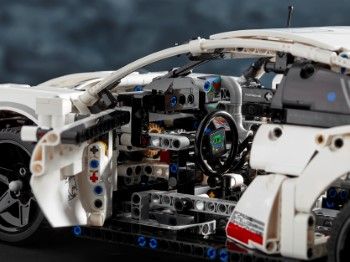 |
 |
 |
 |
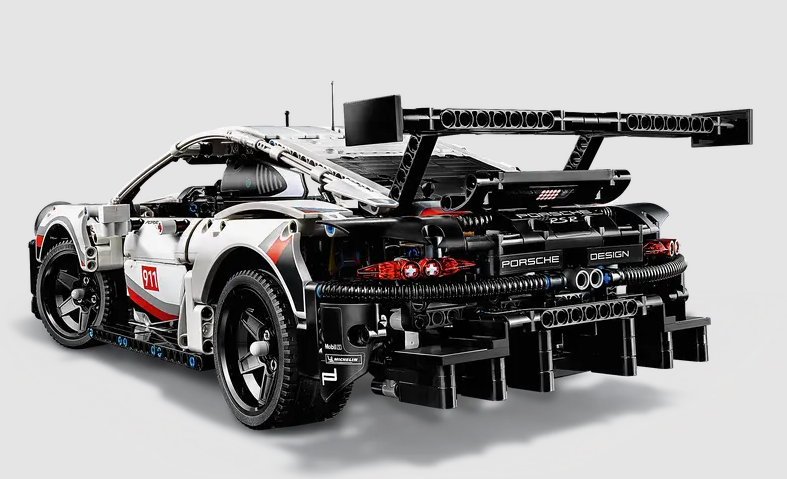 |
Fake indicators
However, despite the identical end result, the build process was not identical…
Bags aren’t standard
This is the very first indicator that perhaps should have tipped me off. The bags were not numbered in the normal LEGO style, the numbers that were there were inconsistent and oddly placed. Additionally, the bags had slight mistakes in capitalisation.
I actually Googled this, since every set I’ve purchased has had numbered bags. Unfortunately, it looks like the real set doesn’t have numbered bags either, so I dismissed all bag-related concerns.
Slight misalignment
Whilst building the engine block, piece 4128598 (Red axle / pin connector) had axle holes that were a few degrees off-centre. This wasn’t enough to cause any problems, but I’d never experienced it in a LEGO set before so was an odd quirk.
Pieces aren’t assembled
This was the first indicator where I started to think something strange was happening.
In my set, the shock absorber wasn’t preassembled. Instead, it came with a yellow piece, a grey piece, and a spring. Similarly, my universal joint came with 2 outside pieces and an extremely hard to connect middle piece.
Whilst the shock absorber was obvious enough, the universal joints took a minute or so each to put together, definitely not normal for LEGO. At this point, I suspected I had accidentally received some sort of “preview” set, where the manufacturing pipeline wasn’t fully finished. This would explain the bags, and why some post-moulding assembly steps weren’t done.
Pieces aren’t numbered
You know how similar looking LEGO “wings” have a number printed on a circular area so you can check you’ve got the right one? These don’t. Again, odd, but not necessarily suspicious.
Instruction print quality is lower
Whilst the set’s instructions booklet felt like the real thing, and was glossy, accurately sized, well-cut etc, it wasn’t perfect. When looking closely, some (not all!) of the piece images are slightly pixelated.
This seems obvious when specifically looking for it, but it isn’t at all during normal building. Here’s a photo of the manual in context, any pixelation is not visible whatsoever.
Again, this wasn’t a red flag to me, since I don’t often stare closely at random pieces in the instruction manual!
Stickers missing a cut
This was where I first suspected this set might not be real. This set has a lot of stickers, in fact my fake has more than the real one due to pieces not being printed. It was unusual for one sticker (#36) to not be cut out, requiring using scissors. Hopefully this is visible by the unbroken light reflection at the edge.
Pieces aren’t printed
See those 4 arches on the right of the sticker sheet? They’re not in the real set, the wheel arch designs are printed on!
The stickers were inexpertly sized, with the sticker itself having large white borders, making it essentially impossible to place perfectly. Again, I Googled my suspicions at this point, and unfortunately came across a comment that made the oddity not seem so odd:
Unfortunately the wheel arches are printed, and the print quality is not that good. Looks like a badly applied sticker.
I was still under the impression this was some sort of “beta” version, so it would make sense that a sticker in this version became printed in the final version!
Long technic pieces have pattern
I know LEGO Technic arms very well. They’re a consistent, solid block with holes in, and pretty distinctive.
With that in mind, why do mine have a zig-zag pattern on!? The middle brick should definitely not look like that.
This probably should have been the point where I knew this set was fake. However, considering the Porsche RSR’s angular, aggressive design overall, I thought there was a small chance this was a special variant used for this set. It would be weird that the instructions don’t match, but receiving a more complex block than the instructions show still isn’t a red flag!
I found this great guide showcasing all the ways to distinguish fake LEGO technic parts. The summary is these long arms are he easiest to distinguish, others have differences you wouldn’t casually spot, and some smaller pieces can be impossible.
Whilst none of the indicators so far were fully convincing, together they made me too suspicious. If I’d only experienced 1-2 of them, I would never have wondered if the set was a fake. 7-8 errors in a LEGO set though? That is not normal.
As such, I vaguely remembered some advice I’d read, and checked whether the few traditional LEGO bricks in the set had the “Lego” logo on top, like they always do…
Pieces have no LEGO logo
Uh oh. This is a fake!
At this point I was primarily confused. I know this is an indicator of a fake set, yet… it had seemed such high quality, how is this possible!?
Then I remembered all the mini red flags beforehand, and cumulatively they finally convinced me. Yep, this definitely isn’t real. I then looked for additional clues, after reading some simple ways to verify a real set.
Unexpected manufacturer sticker
The box seems real. It looks perfect, feels like a LEGO box, has the usual printing quality, I am 90% sure this is real. Given the quality of the fake so far though, maybe this is one last trick!
There is one issue though, the manufacturer / exporter sticker on the box. It’s fairly common for products exported from China to have unexpected stickers, so again this isn’t evidence by itself.
The suspicious part here is the “Manufacturer: Lego Toy Manufacturing (Jiaxing) Co., LTD” and “Exporter: Lego Toys (Shanghai) Co., LTD”. Whilst these technically sounds vaguely right, I’d have expected the manufacturer and exporter to just be, y’know, “LEGO Inc” or similar.
My theory is someone has registered 2 Chinese companies basically calling themselves Lego, utilising weaker copyright protections there, and therefore can sell these “LEGO” sets. It’s obviously not a watertight defence, but it does give them the tiniest hint of plausible deniability! Having 2 companies (one manufacturing, one exporting) also presumably protects them both from being shut down at the same time.
Real indicators
Okay, so that’s a lot of reasons why the set is fake. It seems obvious! Why didn’t I realise until quite far in, when it wasn’t worth returning?
Piece quality
The pieces feel like LEGO. Same material, same colours, same strength. They’re the same. This single point outweighed most of the red flags in my mind.
Complexity of set
This Porsche RSR has 1.5k pieces, made out of various materials, requiring high precision whilst also printing at scale. There are around 200(!) distinct elements, many of them with only 1 piece. For example, this single set features rubber tyres, metal springs, transparent headlights, flexible axles.
Spare pieces
One of the nice things about LEGO is they give a few extra pieces, generally for pieces you’re most likely to use. Unexpectedly, this set did too, and seemed about as generous as the real set.
Due to this, I suspect the fake set actually includes exactly the same bricks as the real thing, and might even be from the same moulds, if not factories.
Zooming into these leftover pieces, you’ll perhaps be able to see their extremely high quality (ignore my photo quality..!).
Thoughts on fake sets
In this specific scenario, I paid £X for a set, and received something 99.99% identical. It’s hard to be too upset by this, since I don’t put much value on brand names, only the quality & reliability of the actual product.
Putting aside the “scam” element of it for a moment, which is obviously wrong, I think the more interesting thinking point is around buying borderline identical knock-off products in general.
I found a site where I believe this fake is originally from, and without the trademark infringement instructions and box (but including the stickers), it is around 25% of the price. This honestly leaves me conflicted. If I can buy a visually identical product that gives me an almost identical experience for 1/4 of the price, why wouldn’t I? Why would any consumer pay hundreds more than they need to?
Well, for a lot of products I’d agree, and just buy the fake version. For LEGO however, they obviously put an extremely high amount of effort into partnering with Porsche, manufacturing the set, designing the instructions, and ensuring it is consistently high quality. Additionally, you have support if there are any problems, whereas the fake seller isn’t obligated to help you.
LEGO is perhaps the only brand where I would (and do) intentionally pay more than I think a product should cost. I’ve spent 25+ years loving LEGO, and they do far more than just selling expensive car sets to adults. I think this is worth protecting by buying the real sets.
Additionally, there’s the concept of a “Veblen good”: One that becomes more desirable as the price rises. If this Porsche RSR had cost £25, I’m not sure that I would have sunk 10+ hours into it (whilst watching TV, I’m not aiming for efficiency!). The fact that it is expensive gives the set additional value, and makes the build process more rewarding.
Overall, I think I am going to choose to ignore fake sets. I’m lucky enough to be able to afford the real thing (at least when they’re on sale!), so I should support the company. Although, I might reconsider that if I ever have space for the 9000 piece LEGO Titanic, £600 is a bit much!
Finally, one last point in the fake set’s favour… Cassie is a fan of their packaging 😼
